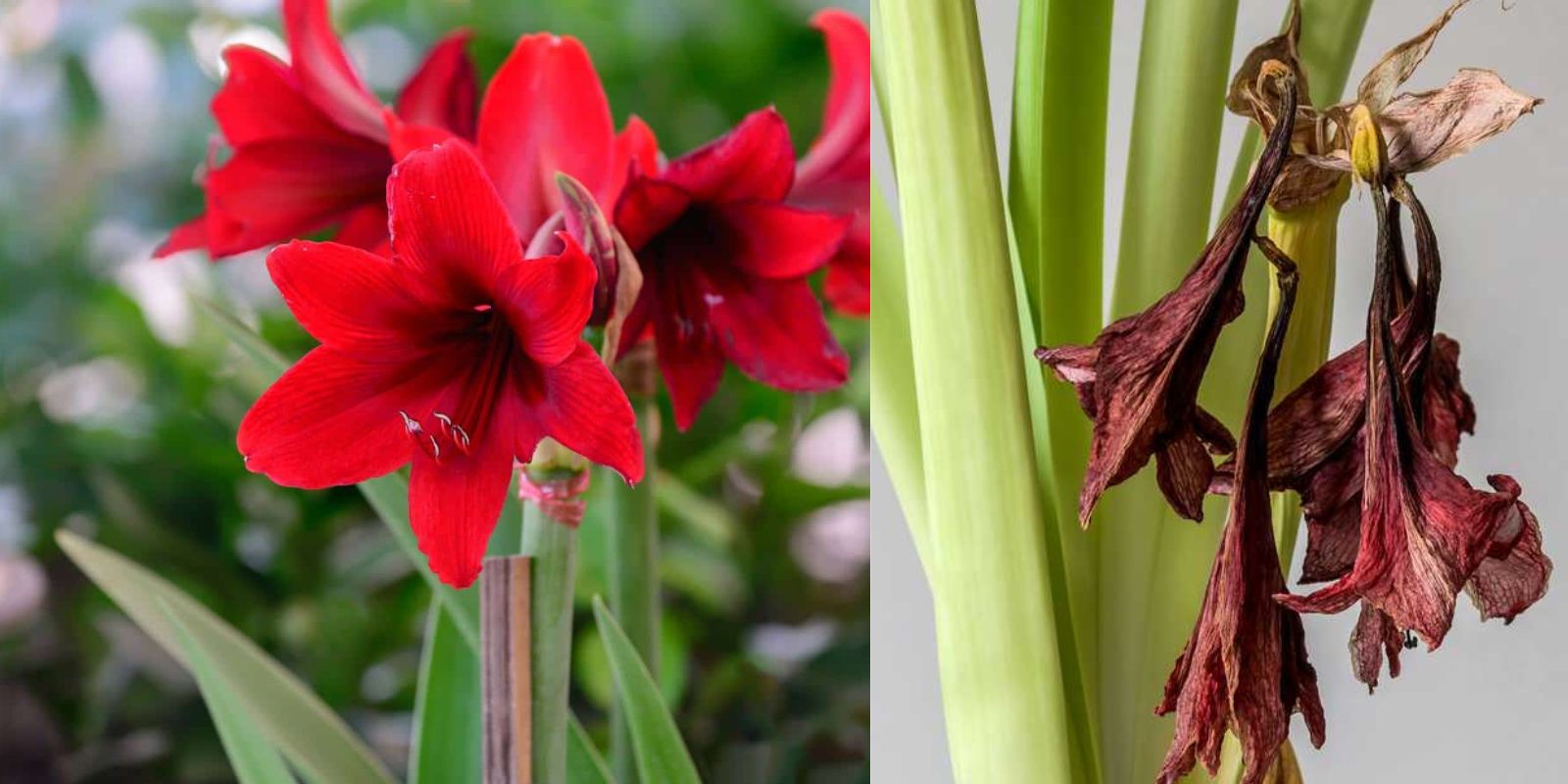The amaryllis, with its bold and vibrant blooms, is a favorite choice for brightening up homes during the winter months. Once the spectacular flowers fade, many people assume their job is done and discard the bulb. However, with a bit of effort, you can coax your amaryllis into blooming again, season after season.
This guide will take you through the step-by-step process of caring for your amaryllis after its initial bloom and ensuring a successful rebloom. By understanding its natural life cycle and needs, you’ll enjoy these gorgeous flowers for years to come.
Understanding the Amaryllis Growth Cycle
To make your amaryllis rebloom, it’s essential to understand its natural cycle. Amaryllis bulbs go through stages of growth, blooming, and dormancy. After flowering, the plant focuses on storing energy in its bulb to produce another round of stunning blooms. Proper care during each stage is key to its success.
Step 1: Post-Bloom Care – Remove Spent Flower Stalks
As soon as the flowers fade, cut the flower stalks back to about an inch above the bulb. Removing the spent flowers prevents the plant from wasting energy on seed production.
However, leave the leaves intact, as they are crucial for photosynthesis. The plant will use its leaves to produce food and store energy in the bulb for future growth.
Step 2: Maintain Regular Watering and Feeding
After removing the flower stalks, focus on keeping the bulb healthy.
- Watering: Water the plant regularly but avoid overwatering. Keep the soil slightly moist but never soggy. Ensure the pot has good drainage to prevent root rot.
- Fertilizing: Feed the plant with a balanced fertilizer (10-10-10 or similar) every 2–4 weeks. The nutrients will help replenish the bulb’s energy reserves, preparing it for another bloom cycle.
Step 3: Provide Adequate Light
Amaryllis bulbs need bright, indirect sunlight to grow strong leaves and store energy. Place the plant in a sunny location, such as a south-facing window.
If natural light is limited, consider using grow lights to supplement the plant’s needs. Strong, healthy leaves indicate that the bulb is gathering enough energy for the next bloom.
Step 4: Move Outdoors (Optional)
When the danger of frost has passed, you can move your amaryllis outdoors for the spring and summer. This step isn’t necessary but can provide additional energy to the bulb.
- Choose a location with partial sunlight to prevent the leaves from scorching.
- Gradually acclimate the plant to outdoor conditions over a few days.
- Water and fertilize as usual.
Step 5: Prepare for Dormancy
After about 4–6 months of growth, your amaryllis will need a period of rest (dormancy) to prepare for blooming again.
- Stop Watering: Gradually reduce watering until the leaves wither and die back. This signals that the bulb is entering dormancy.
- Remove Dead Leaves: Once the leaves are completely dry, gently remove them.
- Store the Bulb: Place the bulb in a cool, dark location (50–55°F or 10–13°C) for 8–12 weeks. Dormancy is essential for resetting the plant’s growth cycle and triggering new blooms.
Step 6: Repot and Restart the Cycle
After the dormancy period, it’s time to wake up your amaryllis and prepare it for blooming.
- Repot the Bulb:
- Remove the bulb from storage and inspect it for any signs of damage or rot.
- Plant it in fresh, well-draining soil, leaving the top third of the bulb exposed.
- Use a pot with drainage holes that’s slightly larger than the bulb.
- Water Sparingly:
- Water lightly at first to avoid overwhelming the dormant bulb.
- As green shoots emerge, gradually increase watering.
- Provide Bright Light:
- Place the pot in a sunny location to encourage growth.
- Rotate the pot occasionally for even exposure to light.
With proper care, your amaryllis will produce new flower stalks within 6–10 weeks after dormancy.
Common Problems and How to Solve Them
1. No Blooms After Dormancy
If your amaryllis doesn’t bloom, it may not have stored enough energy during its growing period. Ensure the plant receives adequate sunlight, water, and nutrients before dormancy.
2. Rotting Bulb
Overwatering or poor drainage can cause the bulb to rot. Always use well-draining soil and a pot with drainage holes.
3. Weak or Spindly Growth
This often occurs due to insufficient light. Move the plant to a brighter location or supplement with grow lights.
Why Reblooming Is Worth the Effort
Encouraging your amaryllis to rebloom not only saves money but also allows you to enjoy a deeper connection with your plant. Watching it go through its life cycle and return with fresh, vibrant blooms is immensely rewarding.
Additionally, amaryllis bulbs can bloom multiple times over several years with proper care, making them a sustainable and eco-friendly addition to your indoor garden.
FAQs About Amaryllis Care
Q: Can I keep my amaryllis bulb in water instead of soil?
Yes, amaryllis bulbs can grow in water if placed in a decorative container with the base of the bulb just above the waterline. However, this method requires careful attention to prevent rot and may not be as sustainable for long-term reblooming.
Q: How long do amaryllis flowers last?
Individual flowers typically last 2–3 weeks, while the entire bloom cycle can span 6–8 weeks.
Q: Can I propagate amaryllis bulbs?
Yes, you can propagate amaryllis by separating offsets (baby bulbs) from the main bulb during repotting. Plant the offsets in their own pots, and they will eventually mature and bloom.
Conclusion: A Blooming Future
With a little care and attention, your amaryllis can bloom again and again, filling your home with vibrant color and joy. By following these steps, you’ll not only master the art of amaryllis care but also deepen your appreciation for this stunning plant’s life cycle.
💬 What’s your favorite tip for keeping amaryllis blooming? Share your thoughts and pictures below!

